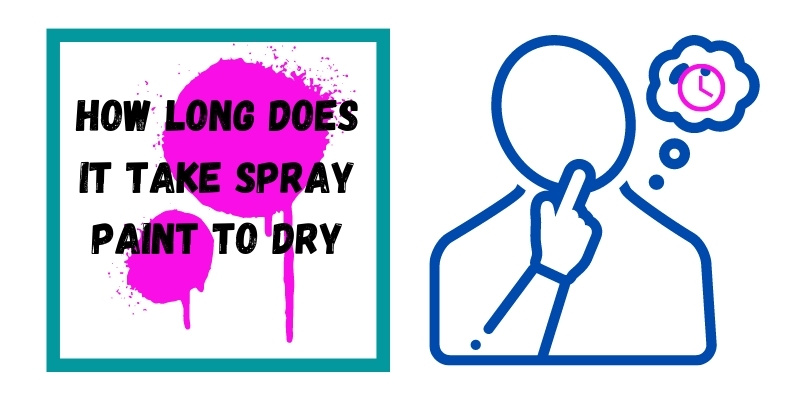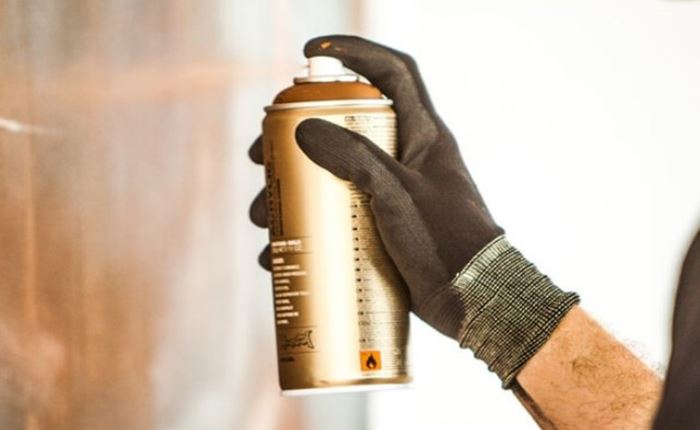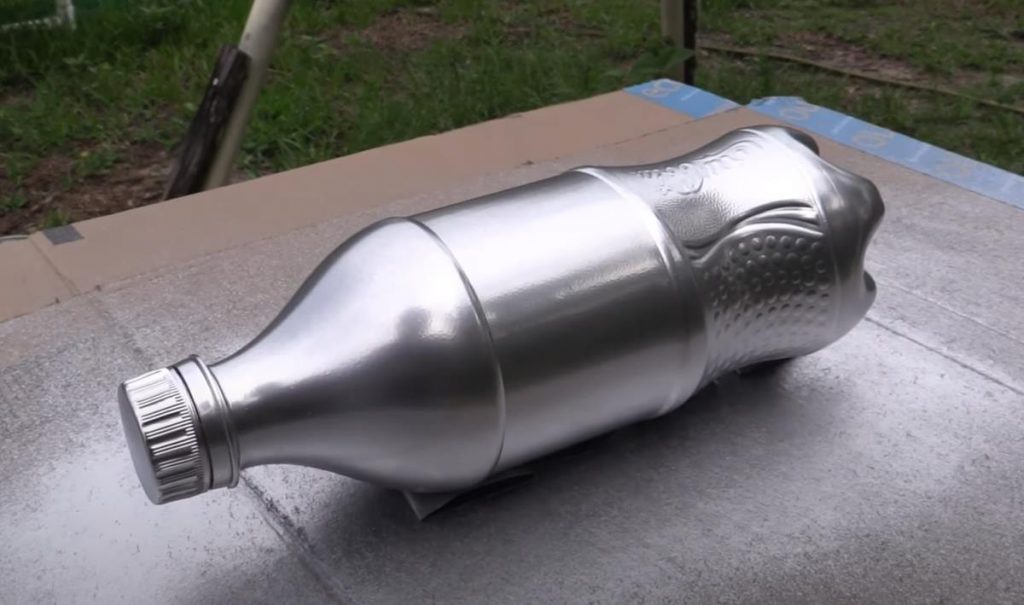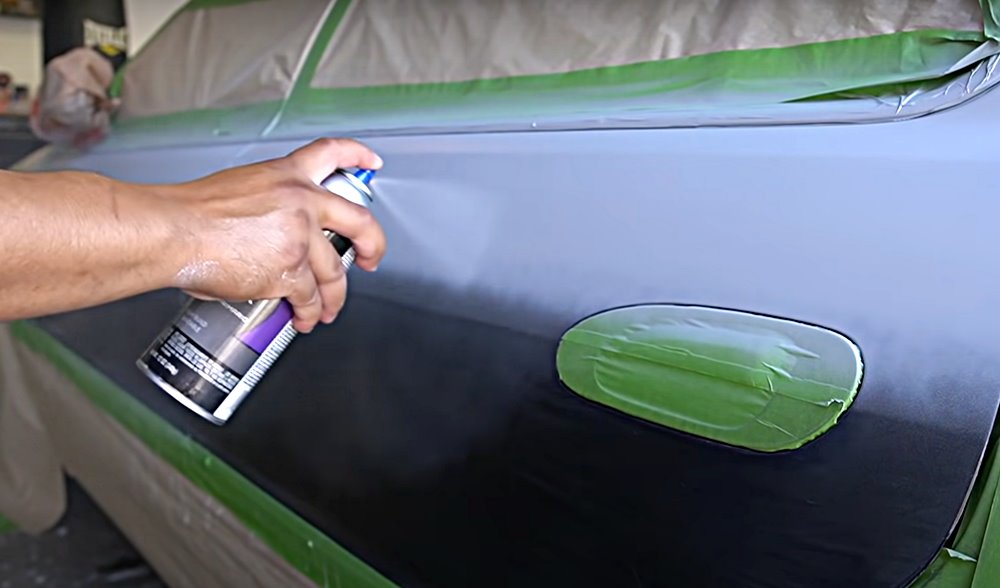Spray painting is a popular method for quickly and easily applying a new coat of paint to a surface. However, one of the most important factors to consider when spray painting is the dry time. Understanding how long it takes for the paint to dry can help you plan your project and avoid mistakes such as smudging or damaging the paint before it has fully dried.
Factors such as temperature, humidity, surface type, paint quality, and the number of coats applied can all affect the dry time of spray paint. In this guide, we will explore these factors in more detail and provide tips for maximizing efficiency when spray painting.

Factors Affecting Spray Paint Dry Time
1. Temperature and Humidity
The warmer and drier the air, the faster spray paint will dry. High humidity levels can slow down the drying process as the moisture in the air can impede the paint from drying properly.
2. Type of surface being painted
Different surfaces have varying levels of porosity, which can affect the drying time of spray paint. For example, wood absorbs paint more quickly than metal, so the paint will dry faster on wood.
3. Quality and type of spray paint
The quality and type of spray paint can also affect the drying time. A high-quality paint will dry faster than lower-quality paint, and certain types of paint, such as oil-based paint, will take longer to dry than others.
4. The number of coats applied
The more coats of paint that are applied, the longer the paint will take to dry. This is because each additional coat adds more paint to the surface, which takes longer to dry.
5. Surface preparation:
ensuring the surface is clean, dry, and free of dust, oil, or debris can also affect the drying time of spray paint. A surface that is not prepared well can impede the paint from sticking properly and drying quickly.
It’s important to keep in mind that these factors are interrelated and affect each other. for example, a high humidity level combined with a high temperature will accelerate the drying process, but a high humidity level combined with a low temperature will slow down the drying process.
Techniques for Speeding Up Dry Time
1. Using a fan or heater to circulate air:
By circulating the air in the room or area where you are spray painting, you can help the paint dry faster. A fan can help to blow away the fumes from the paint and create a more ventilated environment, while a heater can help to dry the paint faster by increasing the temperature.
2. Applying thin coats of paint:
Applying thin coats of paint instead of thick coats can help to speed up the drying time. This is because the thinner the coat, the less paint there is to dry, and the faster the process will be. It’s also important to keep in mind that applying more than 3 coats of paint can impede the drying process.
3. Using a paint accelerator or fast-drying spray paint
Some spray paints come with a built-in accelerator that can help to speed up the drying process. Additionally, there are paint accelerators that can be added to the paint to help it dry faster.
4. Waiting for optimal weather conditions
As mentioned earlier, the temperature and humidity level can affect the drying time of spray paint. It’s best to wait for optimal weather conditions such as dry and warm weather to spray paint to dry faster.
5. Use of a heat gun
This can be used to speed up the drying process by directing heat to the surface, but it should be used with caution as it can cause the paint to wrinkle or blister if used too close or at a high temperature.
By following these techniques, you can speed up the drying time of spray paint and ensure that your project is completed efficiently. Remember, the key to success when spray painting is to be patient and to follow the manufacturer’s instructions.
Can spray paint dry in 2 hours?
It is possible for spray paint to dry in as little as 2 hours, depending on a variety of factors such as temperature, humidity, surface type, paint quality, and the number of coats applied.
Using a spray paint that is specifically formulated for fast drying, and following the manufacturer’s instructions for application, can help to speed up the drying time. Additionally, using techniques such as applying thin coats, using a paint accelerator, and circulating air with a fan or heater can also help to speed up the drying process.
Will spray paint dry in the cold?
Cold temperatures can slow down the chemical reactions that take place during the drying process, making it more difficult for the paint to dry properly. Additionally, cold temperatures can cause the paint to become brittle, which can lead to cracking or chipping.
The ideal temperature for spray painting is between 60 and 90 degrees Fahrenheit, and it’s best to avoid spray painting in temperatures below 50 degrees Fahrenheit. It’s also important to keep in mind that high humidity levels combined with low temperatures can slow down the drying process even more, as the moisture in the air can impede the paint from drying properly.
To ensure the best results, it’s best to wait for warmer weather or to spray paint indoors in a well-ventilated area that is heated to an optimal temperature.
How long does it take for 2 coats of spray paint to dry?
The first coat of spray paint will take anywhere from 15 minutes to an hour to dry, depending on the aforementioned factors. The second coat can be applied once the first coat is dry to the touch, which usually takes around an hour. However, it’s important to keep in mind that the paint may still be curing and fully dry for several hours or even days after the second coat is applied.
The best practice is to wait at least 24 hours before handling or exposing the painted surface to heavy use or extreme temperatures, to ensure that the paint has fully cured. It’s also important to always read and follow the manufacturer’s instructions for the best results.
How long does spray paint take to dry in the sun?
Generally, spray paint will dry faster in the sun than in the shade due to the increased heat and UV rays. Sun can raise the temperature significantly and help the paint dry faster. The ideal humidity level is between 40 and 70 percent, if the humidity level is high, the paint will dry slowly even if it’s in the sun.
However, it’s important to keep in mind that if the temperature is too hot, it can cause the paint to dry too quickly, which can lead to problems such as runs, drips, and uneven coverage. It’s also important to note that the sun can cause the paint to fade or discolor over time if it is not UV-resistant paint.
The best practice is to wait at least 24 hours before handling or exposing the painted surface to heavy use or extreme temperatures, to ensure that the paint has fully cured.
How long does spray paint take to dry on metal?
Metal surfaces are non-porous, which means they don’t absorb paint quickly, so the paint will dry slower than on porous surfaces.
How long does spray paint take to dry on the car?
Car surfaces are smooth and non-porous which will make the paint dry faster than on porous surfaces. Also, it’s important to mention that spray painting a car is a delicate process and it’s recommended to leave this task to professionals, as it requires knowledge, experience, and the right equipment to achieve a professional finish.
How long does spray paint take to dry wood?
Wood surfaces are porous, which means they absorb paint quickly, so the paint will dry faster than on non-porous surfaces. It’s important to note that the wood surface should be clean, dry, and free of dust, oil or debris to ensure proper adhesion and drying.
How long does it take spray paint to dry on plastic?
It typically takes half an hour or longer for the paint to dry completely on plastic surfaces. You should know that in about ten minutes, the surface will be ready for you to touch it but still stick somewhat reliably if not entirely so. After 20 more minutes of pressing firmly with no fingerprints left behind (or only one), fingers are able to freely enter without getting any additional colors onto their dress.
Conclusion
In conclusion, the time it takes for spray paint to dry can vary depending on several factors such as temperature, humidity, surface type, paint quality, and the number of coats applied.
While spray painting may be a quick and easy way to revamp any surface, it’s important to take the time to properly prepare the surface and to use the right tools and techniques for the best results.


